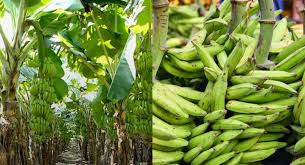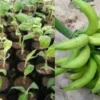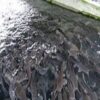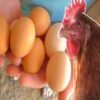For field cultivation, medium plantains are preferred over giant ones, even though giant plantains produce heavier bunches. Giant plantains take longer to mature and are more susceptible to damage from strong winds due to their size.
The decision to grow a French or False Horn plantain cultivar should depend on consumer preference. Horn plantains should not be cultivated as their yield is significantly lower.
Read Also: Bacterial Canker (Stone fruit trees): Description, Damages Caused, Control and Preventive Measures
Selecting Plantain Cultivars
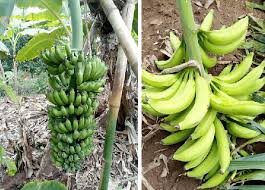
Cultivars, short for “cultivated varieties,” are plants propagated vegetatively rather than through seeds. When selecting the best plantain cultivar, consider the following factors:
- Plant size: The number of leaves produced before flowering.
- Bunch type: Te shape and size of the bunch produced.
- Consumer preference: Market demand should guide selection.
Conventional Planting Materials
- Peeper: A small sucker emerging from the soil.
- Bits: Pieces of a chopped corm.
- Maiden sucker: A large sucker with foliage leaves or a large pseudostem that does not produce fruit.
- Sword sucker: Characterized by a narrow base, short pseudostem, and lance-shaped leaves. This is the best conventional planting material as it develops into a strong, productive plant.
- Water sucker: Has a short pseudostem and broad leaves but is weakly attached to the rhizome. It generally produces weaker plants with lower yields.
Maidenheads and large sword suckers are preferred over water suckers due to their higher productivity.
Sources of Plantain Planting Materials
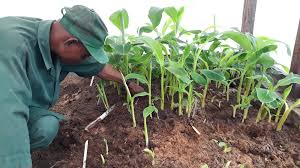
Planting materials should be sourced from healthy and reliable locations, such as:
- Existing plantain farms: Preferably old fields with healthy suckers.
- Multiplication plots: Farms dedicated to sucker production rather than fruit production.
- Tissue culture laboratories: Provide micro-propagated plants that are pest and disease-free.
If the health status of the suckers is unknown, they should be treated before planting to eliminate pests and diseases.
Obtaining and Handling Plantain Suckers
Plantain plants are propagated through suckers, which are shoots that grow from the base of the plant or corms (underground rhizomes). These baby plants are essential for starting new plantations.
To ensure high productivity:
- Choose suckers from vigorous plants with small, spear-shaped leaves, preferably around four feet high.
- When transplanting a sucker, cut downwards to retain as much corm and root as possible.
- Space suckers at least two to five meters apart.
- Keep young plants moist but avoid excessive watering since they lack leaves to regulate evaporation.
Read Also: 7 Medicinal Health Benefits of Daffodils (Narcissus Plant)
Preparing Plantain Suckers for Planting
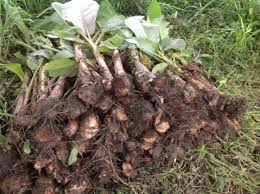
Sucker preparation (peeling) is carried out in the field where the planting material is collected. This minimizes the risk of transferring nematodes and stem borers to the new field.
- Separation: Use a spade or machete to separate suckers from the mother plant, ensuring the corm remains undamaged.
- Peeling: Carefully remove the outer layers of the corm to eliminate pests. Healthy corms appear white, while infected ones show brown or black spots, which should be cut away.
- Drying: Transport prepared corms to their planting destination and allow them to dry for a few days in the shade.
- Storage: Suckers should be planted within two weeks. Prolonged storage reduces future yields.
By selecting and preparing the right plantain suckers, farmers can improve yield potential and reduce disease risks. Share this information with others who may benefit from it!
Do you have any question, suggestion or other contributions? kindly use the comment box provided below for all your contributions. You are also encouraged to please kindly share this article with others you feel can benefit from this information if found useful enough as we may not be able to reach everyone at the same time. Thank you so much for sharing!
Read Also: Relationship Marketing Process and Approaches to the Study of Marketing
Do you have any questions, suggestions, or contributions? If so, please feel free to use the comment box below to share your thoughts. We also encourage you to kindly share this information with others who might benefit from it. Since we can’t reach everyone at once, we truly appreciate your help in spreading the word. Thank you so much for your support and for sharing!

